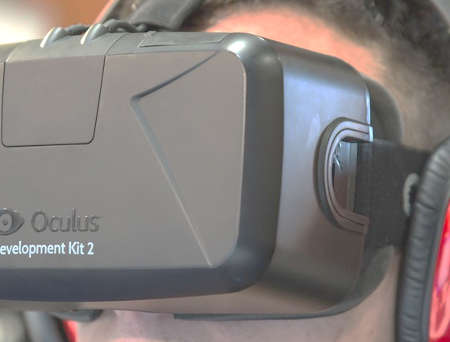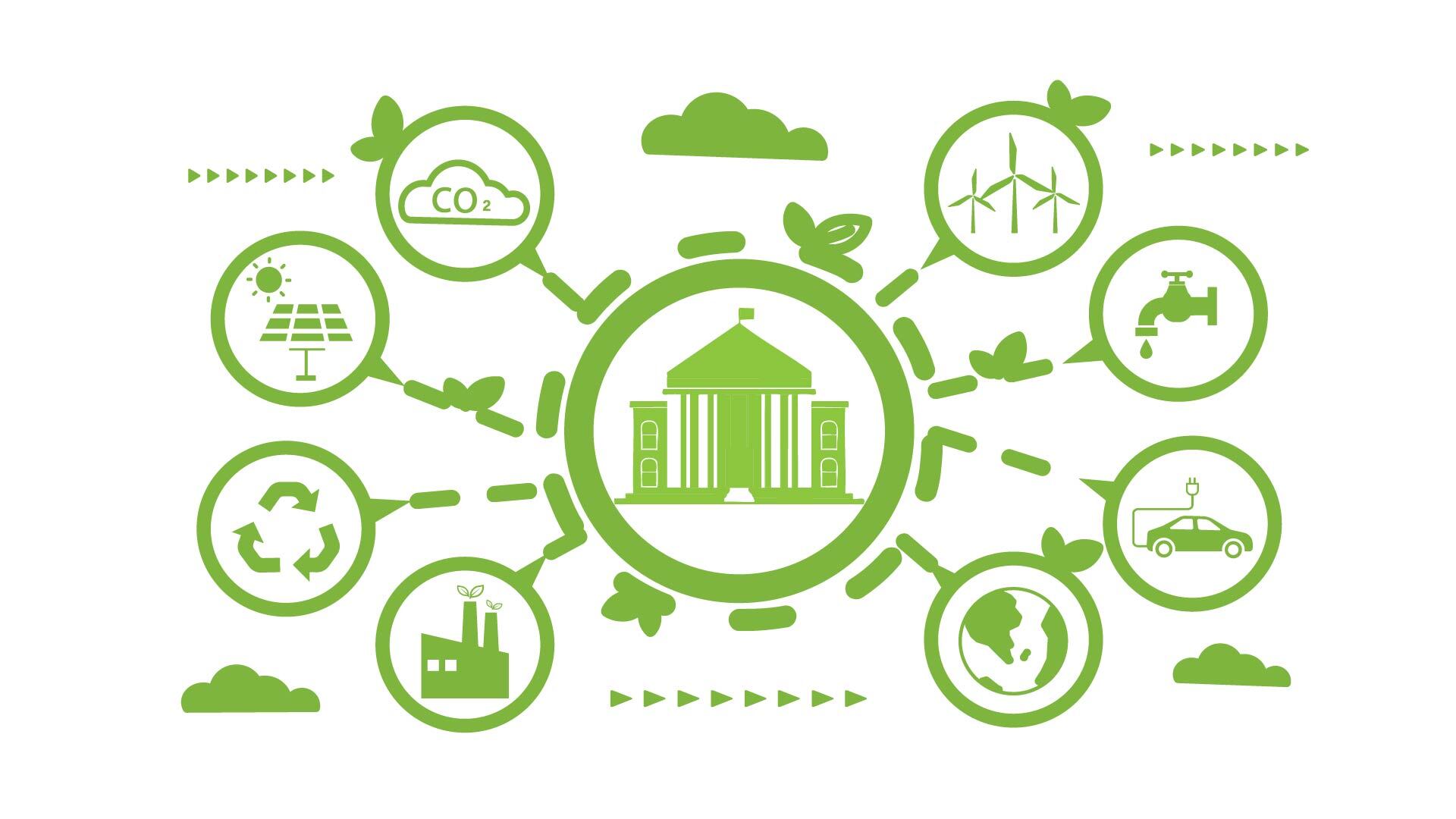Growth in Technology is everywhere. Where will technology lead us in future courtroom design? What will future courtrooms be like, and is your court ready for these changes?
No Crystal Ball, But…
No one knows how to use a crystal ball to predict the future, but by comparing past trends with the status quo, we can't direct where trends might take us. The 1960s TV series The Jetsons got some things right but others humorously wrong (like the widespread use of the flying car).
As discussed in our recent blog, there has been historical consistency in courtroom layout and design. Does this suggest the need to continue traditional courtroom forms and functions? Based on the changes observed over the past decade, can technology allow future courtroom layouts to depart from historic norms significantly?
To answer those questions, let’s first look at what impact technology has recently had on current courtroom usage and design, then try to project these trends into the future. Perhaps we can hit more marks than The Jetsons did.
At This Point
Today, we use electronic case management and online research materials instead of paper files. The case data and research are available to judges and clerks at the stroke of a computer key for display on their computer monitors to reference during a trial.
Evidence can also be presented digitally during a trial for review by the judge and jurors. Witness testimony can be videotaped and similarly presented on monitors instead of in-person appearances.
These practices have led to a need for retrofitting the furniture components in many older courtrooms to accept the new technology.
Videoconferencing, however, is the technological advance that has affected courtroom design the most in recent years. Courts currently use videoconferencing for several purposes.
- Videoconferencing between separate locations or cities can allow a judge to conduct arraignment hearings for in-custody defendants without needing transportation and related security. This has led to hearing rooms that are explicitly designed for videoconferencing.
- Videoconferencing can allow separate courtrooms for public spectator overflow in situations where a courtroom is overcrowded due to a high-profile trial. This option has alleviated the need for expanded or intensified courtroom spectator seating.
- Videoconferencing also allows an unruly prisoner to be removed from the courtroom to a holding cell and still view the proceedings as is their right. Again, this has led to a need for retrofitting furniture components in older courtrooms to accept the audio/video link technology.
Today, many courts use electronic recording systems instead of stenographic machines to record court proceedings. This technology also requires retrofitting the related furniture components. CCTV and other electronic security measures have similarly required retrofitting courtroom components.
However, I suspect these advances will be just the tip of the technology-inspired iceberg.
Some Future Possibilities
One technology that is certain to expand and impact court proceedings is videoconferencing between remote locations. The current use will likely expand to allow more at-risk witnesses to be conferenced in on a criminal trial to provide real-time testimony and allow attorneys to participate remotely. Expert witnesses could be called to testify from around the world without the need to travel.
These changes will affect future courtroom design and require layouts and furniture to accommodate the infrastructure components. This may be termed a distributed courtroom and may result in future designs that specifically accommodate a limited number of participants.
Imagine the future use of virtual reality (VR) in a courtroom. VR is a technology replicates an environment and engages the senses, including sight, touch, hearing, and even smell, to create a life-like experience. It tricks your brain into believing that you are somewhere else. VR could allow the jury to experience a crime scene or a witness’s version of events in a more life-like way than is currently possible with just oral testimony.
VR is most often displayed by a headset for a fully interactive experience. Can you envision a jury box with jurors who look like the VR user pictured below?
Another interesting technology on the horizon is a holographic display that uses light diffraction to create a virtual 3D image of an object. Using this technology, a holographic display could be projected into a space such as a courtroom well for three-dimensional viewing. The image floats in space, as shown in the following photo. Could this technology be used for evidence presentation in a future courtroom? Of course, this could also be an over-projection like The Jetsons’ flying car.

However, if 360-degree 3D hologram displays did become an accepted courtroom feature, the courtroom layout, furniture, and infrastructure components might need to be altered to accommodate the use of this technology. Consider the potential impact on the design of the typical well area. All furniture components surrounding the courtroom well might need to be repositioned to accommodate 360-degree displays. Then again, the 3D image will be projected above the furniture in the courtroom and even rotated or flipped to view evidence from all sides. This may require changing how the jurors’ chairs are angled or elevated.
Taken to an extreme, an even more significant increase in the use of videoconferencing might ultimately lead to the virtual courtroom where all trial participants in a civil trial (perhaps not possible based on judicial standards for a criminal trial) are remotely located, and the trial is conducted in cyberspace. While a departure from the current in-person conduct of a trial may seem radical from this vantage point, a future generation of judicial professionals who have grown up with digital and online technologies might consider a virtual courtroom to be more of a norm.
As an example of how technologies could also impact trial-related procedures outside the courtroom, let’s look at a practice called predictive coding. Predictive coding would seem to be a natural extension of electronic case filing (ECF) and electronic case management (ECM).
Predictive coding is a technology that uses software, rather than legal staff, to review trial-related documents to determine their relevance to a case. With documents filed electronically, having case documents directly reviewed by a predictive coding app would be practical. This new technology could be particularly beneficial in cases that tend to be document-intensive, mainly white-collar crime cases. The impact of new technologies on the judicial process could also be far-reaching.
The Vision of the Future Courtroom
So what does this all mean? What will the flying car look like? How might future courtrooms differ from today’s courtrooms?
Let’s start with “bricks and mortar” courtrooms. I suspect that bricks and mortar courtrooms will be fewer in the future. They will be used principally for high-profile trials and special proceedings occasions. I envision them to be uniformly round in layout, with the focus on a more interactive well area designed to resemble a small stage. This is where 3D holographic images of evidence will be projected floating in mid-air at eye level. The judge’s bench, jury box, attorney’s tables, and spectator seating area will be slightly elevated and circle the well. The furniture components will all be designed to accommodate live participants present in the courtroom. The ceiling will be slightly domed to ensure unimpeded visibility for all trial participants. Picture a smaller version of the intergalactic assembly hall in Star Wars.
Still, most courtrooms will be smaller and designed to accommodate a limited number of participants; a distributed courtroom, as discussed above, with some participants using videoconferencing to participate. These courtrooms might be no larger than today’s hearing rooms. I envision them also to be circular. But let’s not stop there.
The virtual courtroom indeed requires a leap of faith to imagine. Actual facilities for this form of courtroom might be limited solely to a “stage set” for the judge, perhaps located within the judge’s chambers. Trials would be conducted in a cyberspace courtroom with witnesses, jurors, attorneys, and spectators participating through audio/visual links or online Internet connection from outside the courthouse. It is considered an ultimate expression of a technology-driven civic activity.
Change is Coming Faster and Faster
Robot judges? Probably not. But who would have predicted that computers and the Internet would replace feather quills and parchment when our laws and courtroom layouts were shaped in the 1700s? Although these changes occurred over more than 200 years, as Alvin Toffler reminded us in his book Future Shock, the rate of change continues to accelerate. Based on this principle, the rate of change in future courtroom design might also accelerate. Could we see a comparable change occurring in the next 20 years? Considering the technology-based changes that have taken place in courtroom functions over the past 20 years, I would not be surprised.
______________________________________________________________







.jpg)
.jpg)
.jpg)
.jpg)
.jpg)


.jpg)
.jpg)
-1.jpg)
.jpg)
.jpg)
.jpg)
.jpg)
.jpg)

